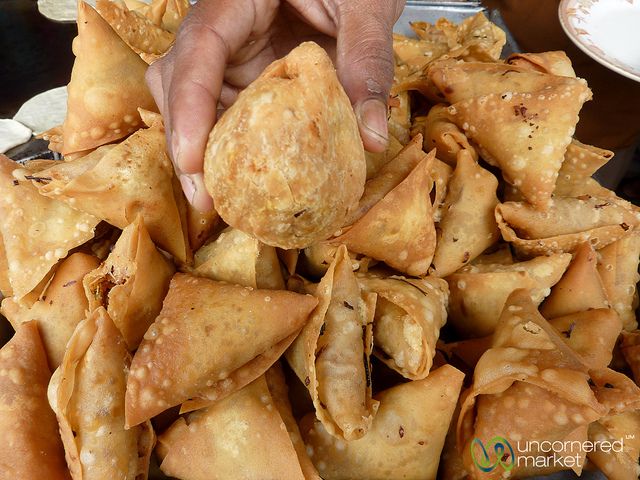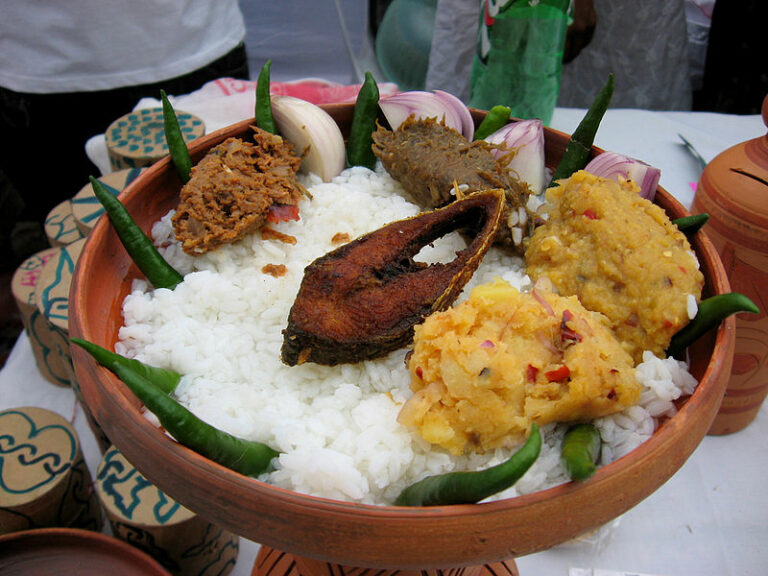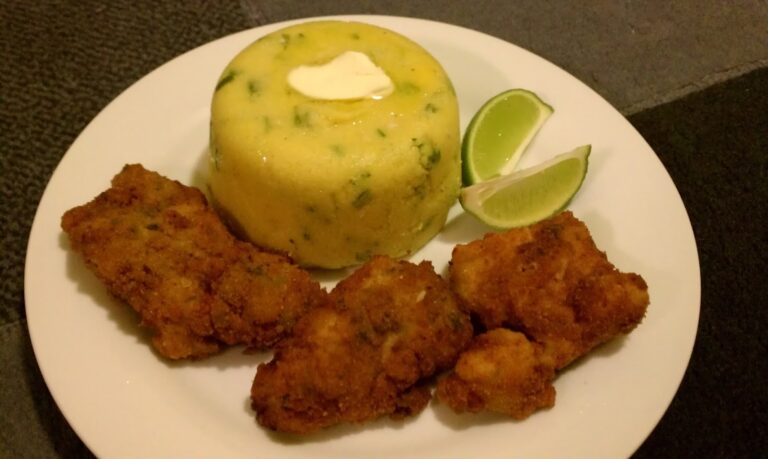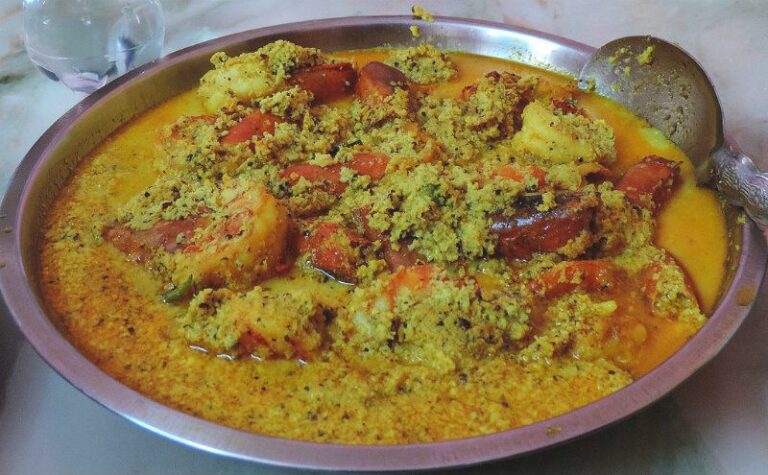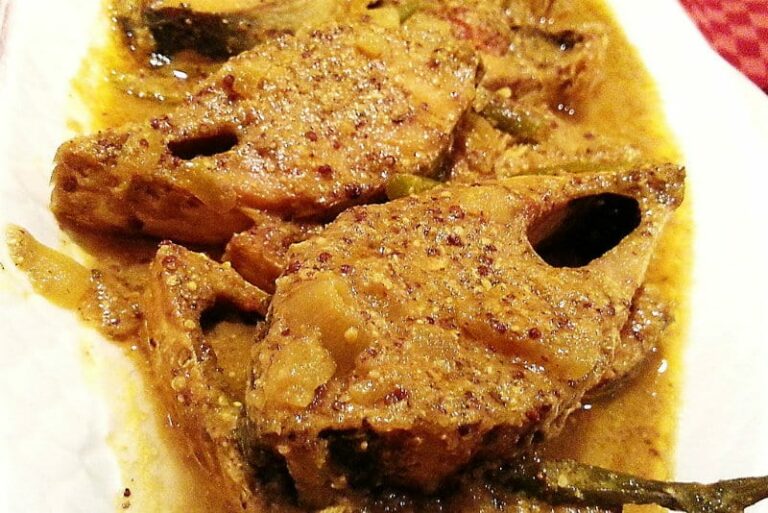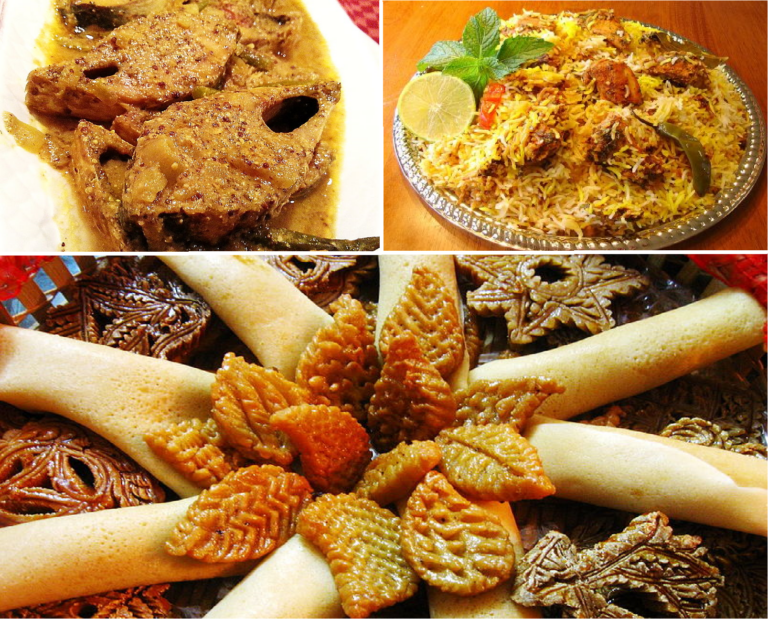Introduction: Exploring Vegetarianism in Bangladeshi Cuisine
Bangladesh is renowned for its rich culinary heritage, which is influenced by Mughlai, Bengali, and British cuisines. The country’s diverse culinary landscape boasts of flavorful curries, aromatic rice dishes, and an array of meat preparations. However, the question that often arises is whether there are any vegetarian options in Bangladeshi cuisine. In this article, we will explore the concept of vegetarianism in Bangladeshi culture, essential ingredients in vegetarian Bangladeshi dishes, popular vegetarian dishes, regional variations, street food options, and vegetarian options in fine dining.
The Concept of Vegetarianism in Bangladeshi Culture
The concept of vegetarianism in Bangladeshi culture is not new. In fact, a significant number of people in Bangladesh follow vegetarianism due to religious and cultural reasons. Many Hindus and Buddhists in Bangladesh practice vegetarianism, and their cuisine is predominantly plant-based. However, in general, vegetarianism is not as prevalent in Bangladesh as it is in other countries like India. Nonetheless, with the growing awareness of the benefits of a plant-based diet, there has been a surge in the demand for vegetarian options in Bangladeshi cuisine.
Essential Ingredients in Vegetarian Bangladeshi Dishes
Vegetarian Bangladeshi dishes rely heavily on seasonal vegetables, lentils, legumes, and beans. Some of the essential ingredients in vegetarian Bangladeshi cuisine include mustard oil, cumin, turmeric, coriander, ginger, garlic, and garam masala. The use of these spices and herbs adds a depth of flavor to the dishes that are often paired with rice, roti, or paratha. Additionally, the use of coconut milk, yogurt, and paneer is also prevalent in vegetarian dishes, adding creaminess and tanginess to the preparations.
Popular Vegetarian Dishes in Bangladeshi Cuisine
Some of the most popular vegetarian dishes in Bangladeshi cuisine include Shukto, a mixed vegetable stew, Chorchori, a stir-fried vegetable medley, and Dal, a lentil soup. Other popular vegetarian dishes include Aloo Posto (potatoes in a poppy seed paste), Begun Bhaja (fried eggplant), and Chana Masala (spicy chickpeas). These dishes are not only flavorful but also nutritious, providing the body with essential vitamins, minerals, and dietary fibers.
Regional Variations in Vegetarian Bangladeshi Food
Bangladesh is a country with diverse regional cuisines, and each region has its unique take on vegetarian dishes. In the Chittagong region, dishes like Shutki Bhuna (dried fish curry) are substituted with a vegetarian version, using jackfruit or raw banana. Similarly, in the Sylhet region, the use of mustard paste and panch phoron (five-spice blend) is prevalent in vegetarian dishes. In contrast, the Rajshahi region boasts of dishes like Shobji Bhorta (mashed mixed vegetables) and Kumra Bharta (mashed pumpkin).
Vegetarian Street Food in Bangladesh: A Culinary Delight
Street food is an integral part of Bangladeshi cuisine, and vegetarian options are abundant. One of the most popular street food dishes is Fuchka, also known as Pani Puri or Golgappa, which is a hollow crispy sphere filled with spicy potato and chickpea mixture. Other vegetarian street food options include Jhalmuri (spicy puffed rice), Bhel Puri (a mix of puffed rice, vegetables, and chutney), and Aloo Chop (spiced potato fritters).
Vegetarian Options in Bangladeshi Fine Dining
Vegetarian options in Bangladeshi fine dining are limited but not non-existent. Most high-end restaurants in Bangladesh offer vegetarian options on their menu, usually featuring gourmet dishes like Paneer Makhani, Vegetable Kofta, and Dal Makhani. Additionally, some restaurants offer fusion dishes that blend traditional Bangladeshi flavors with international cuisines, such as Quinoa Pulao or Grilled Vegetable Skewers.
Conclusion: Embracing Vegetarianism in Bangladeshi Cuisine
In conclusion, vegetarianism in Bangladeshi cuisine is not a new concept, but it is not as prevalent as in other countries. However, with the growing awareness of the benefits of a plant-based diet, there has been a surge in demand for vegetarian options. The use of seasonal vegetables, lentils, legumes, and beans, combined with the rich blend of spices and herbs, makes vegetarian Bangladeshi cuisine a flavorful and nutritious option. Whether it is street food or fine dining, vegetarian options in Bangladeshi cuisine are a culinary delight worth exploring.

